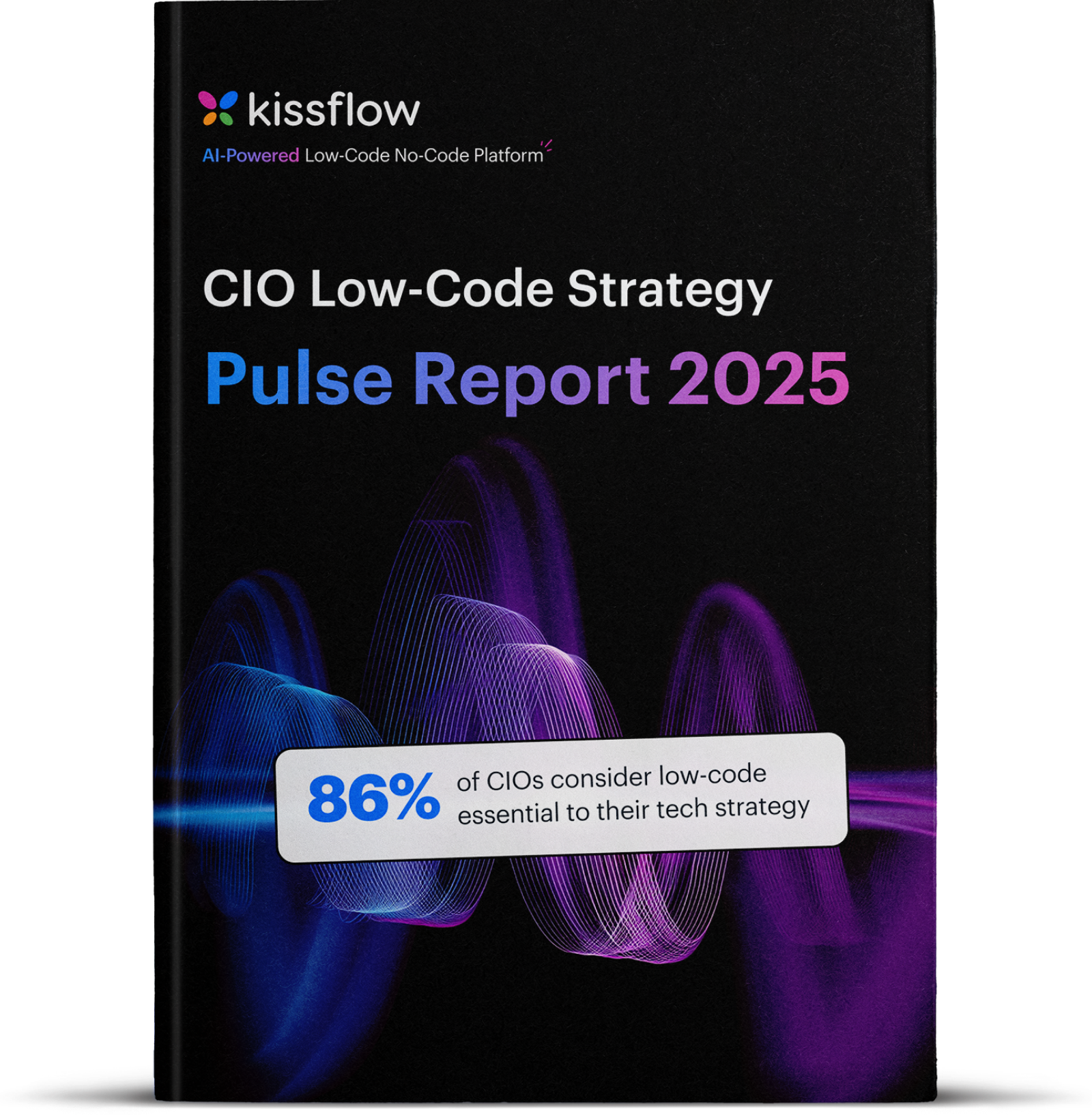
- >
- Bpm platform>
- Enterprise Automation Solutions: Key Tools for Efficiency
Enterprise automation: Redefining how businesses work
digital transformation Remember when your biggest IT headache was keeping the servers running? Those were simpler times. Now you're juggling cloud migrations, security threats, compliance audits, and a CEO who wants everything done yesterday while your team is already stretched thin.
Here's the reality: your competitors aren't just automating their repetitive tasks anymore. They're reimagining entire business processes, and they're pulling ahead fast. That manual approval workflow that takes three days? They've got it down to three hours. Those monthly reports that eat up your analyst's time? Generated automatically with real-time data.
The companies winning in 2025 aren't necessarily the ones with the biggest budgets or the most staff. They're the ones that figured out how to make their operations run like clockwork while everyone else is still pushing paper around.
Why automation is a priority for modern enterprises
The acceleration of digital transformation has fundamentally changed business expectations. Customers demand instant responses, stakeholders expect real-time insights, and employees require seamless workflows that eliminate repetitive tasks. Organizations that fail to automate face several critical challenges:
Operational Inefficiencies: Manual processes create delays, errors, and resource waste that compound across departments and impact bottom-line performance.
Scalability Limitations: As businesses grow, manual workflows become unsustainable, creating operational bottlenecks that prevent organizations from capitalizing on market opportunities.
Competitive Disadvantage: Companies with automated operations can respond faster to market changes, deliver superior customer experiences, and allocate human resources to strategic initiatives.
Compliance and Risk Management: Manual processes introduce human error and inconsistency, creating compliance risks and audit challenges that can result in significant financial and reputational damage.
What is enterprise automation?
Enterprise automation represents a comprehensive approach to streamlining business operations through intelligent technology integration. Unlike traditional automation solutions that focus on individual tasks, enterprise automation creates interconnected systems that orchestrate complex workflows across departments, applications, and data sources.
At its core, enterprise automation combines multiple technologies to create adaptive, intelligent systems that can handle end-to-end business processes with minimal human intervention. This includes everything from data collection and processing to decision-making and action execution across the entire organizational ecosystem.
Enterprise automation platforms serve as the central nervous system for modern businesses, enabling seamless communication between disparate systems while providing the flexibility to adapt workflows as business needs evolve.
How it goes beyond RPA and traditional automation
While Robotic Process Automation (RPA) revolutionized task-specific automation, enterprise automation represents the next evolutionary step. Traditional RPA solutions excel at automating repetitive, rule-based tasks but often create fragmented automation islands that lack integration and intelligence.
RPA Limitations:
- Focuses on individual tasks rather than complete processes
- Requires significant maintenance when business rules change
- Limited ability to handle unstructured data or complex decisions
- Creates dependencies on specific applications or interfaces
Enterprise Automation Advantages:
- Process Orchestration
: Coordinates multiple automated tasks into seamless end-to-end workflows - Intelligent Decision-Making: Incorporates AI and machine learning to handle exceptions and adapt to changing conditions
- Cross-System Integration: Connects disparate applications, databases, and platforms without requiring individual bot maintenance
- Scalable Architecture: Designed to grow with business needs and accommodate new technologies
Enterprise automation platforms provide the infrastructure to move beyond task automation toward comprehensive business process transformation.
Learn more: Enterprise automation software
Key components of enterprise automation
Workflow automation and orchestration
Modern workflow automation engines serve as the backbone of enterprise automation, coordinating complex multi-step processes across departments and systems. These platforms enable organizations to design, deploy, and manage sophisticated workflows that adapt to changing business conditions while maintaining consistency and compliance.
Advanced orchestration capabilities ensure that automated processes can handle exceptions, route work appropriately, and maintain visibility across the entire operation.
Artificial intelligence and machine learning integration
AI and ML components enable automation platforms to handle unstructured data, make intelligent decisions, and continuously improve performance. This includes natural language processing for document analysis, predictive analytics for forecasting, and machine learning algorithms that optimize workflows based on historical performance data.
Low-code/no-code development platforms
Enterprise automation platforms increasingly feature visual development environments that enable business users to create and modify automated workflows without extensive programming knowledge. This democratization of automation development accelerates implementation timelines and reduces IT bottlenecks.
Integration and API management
Comprehensive integration capabilities ensure that automation platforms can connect with existing enterprise applications, cloud services, and third-party systems. Robust API management features enable secure, scalable connections that maintain data integrity and system performance.
Analytics and performance monitoring
Built-in analytics provide real-time visibility into automated process performance, enabling continuous optimization and ROI measurement. Advanced monitoring capabilities identify bottlenecks, track compliance metrics, and provide insights for strategic decision-making.
Benefits of enterprise automation
Operational efficiency and cost reduction
Enterprise automation typically delivers 20-30 percent cost savings through reduced manual labor, faster processing times, and improved resource allocation. Organizations can redirect human capital from repetitive tasks to strategic initiatives that drive business growth.
Enhanced accuracy and compliance
Automated processes eliminate human error and ensure consistent application of business rules. This is particularly valuable for regulatory compliance, where automation provides audit trails, ensures adherence to policies, and reduces compliance risks.
Improved customer experience
Faster response times, consistent service delivery, and 24/7 availability significantly enhance customer satisfaction. Automated workflows can handle customer requests immediately, escalate issues appropriately, and provide real-time status updates.
Scalability and agility
Enterprise automation platforms enable organizations to scale operations without proportional increases in overhead. As business volumes grow or change, automated processes adapt seamlessly, maintaining performance and quality standards.
Data-driven decision making
Automation platforms generate comprehensive data about business processes, providing insights that enable evidence-based decision making and continuous process improvement.
Industry applications and use cases
Banking and financial services
Financial institutions leverage enterprise automation for loan processing, compliance reporting, fraud detection, and customer onboarding. Automated workflows reduce processing times from days to hours while ensuring regulatory compliance and improving customer satisfaction.
Key applications include:
- Automated loan underwriting and approval processes
- Regulatory reporting and compliance monitoring
- Customer account management and maintenance
- Risk assessment and fraud prevention
Retail and e-commerce
Retail organizations use automation for inventory management, order processing, customer service, and supply chain optimization. Automated systems ensure accurate inventory levels, fast order fulfillment, and personalized customer experiences.
Common use cases include:
- Order processing and fulfillment automation
- Inventory management and replenishment
- Customer service and support automation
- Price optimization and promotional management
Insurance
Insurance companies automate claims processing, policy administration, underwriting, and customer communications. These implementations reduce processing times, improve accuracy, and enhance customer experience while maintaining regulatory compliance.
Typical applications:
- Claims processing and settlement automation
- Policy issuance and renewal workflows
- Underwriting and risk assessment processes
- Customer communication and notification systems
Telecommunications
Telecom companies utilize automation for network management, customer provisioning, billing processes, and service activation. Automated workflows ensure rapid service delivery and consistent network performance while reducing operational costs.
Key implementations:
- Service provisioning and activation
- Network monitoring and maintenance
- Customer billing and payment processing
- Trouble ticket management and resolution
Enterprise automation and digital transformation
Enterprise automation serves as a critical enabler of digital transformation initiatives, providing the infrastructure necessary to modernize business operations and create competitive advantages. Rather than simply digitizing existing processes, automation enables organizations to reimagine how work gets done.
Transformation Enablers:
- Process Redesign: Automation projects often reveal opportunities to fundamentally improve business processes rather than simply accelerating existing workflows.
- Data Liberation: Automated systems generate valuable data that provides insights into business performance and customer behavior, enabling data-driven transformation strategies.
- Cultural Change: Successful automation initiatives require organizational change management that empowers employees to focus on strategic, creative work rather than routine tasks.
- Technology Integration: Enterprise automation platforms serve as integration layers that connect legacy systems with modern cloud applications, enabling gradual technology modernization.
Future trends in enterprise automation
The momentum behind enterprise automation continues to accelerate, with 73 percent of enterprises having increased their automation investments in the past year, signifying its mission-critical role in business operations. AI-driven automation deployments are delivering impressive returns, with ROI ranging from 30 percent to 200 percent in the first year, while 62 percent of organizations expect returns exceeding 100 percent from agentic AI in 2025.
Hyperautomation
The evolution toward hyperautomation involves combining multiple automation technologies including AI, ML, RPA, and process mining to create comprehensive automation ecosystems. This approach maximizes automation potential across the entire organization.
Intelligent process discovery
Advanced process mining and task mining technologies automatically identify automation opportunities by analyzing user behavior and system interactions. This capability accelerates automation implementation and ensures optimal process selection.
Autonomous operations
The future of enterprise automation points toward autonomous business operations that can self-manage, self-optimize, and self-heal without human intervention. These systems will adapt to changing conditions and continuously improve performance.
Citizen development
Low-code and no-code platforms are democratizing automation development, enabling business users to create sophisticated automated workflows. This trend accelerates automation adoption while reducing IT bottlenecks.
Edge computing integration
As organizations adopt edge computing, automation platforms will extend beyond centralized data centers to enable real-time processing and decision-making at the network edge.
Transform your business operations with Kissflow
Ready to move beyond fragmented automation solutions toward comprehensive business transformation? Kissflow's low-code platform provides the integrated capabilities your organization needs to streamline operations, reduce costs, and accelerate growth through intelligent automation.
Our enterprise automation solutions combine workflow automation software, intelligent orchestration, and low-code development in a unified platform designed specifically for enterprise requirements. With proven implementations across banking, retail, insurance, and telecommunications, Kissflow delivers the scalability, security, and flexibility that IT leaders demand through comprehensive business process automation and digital process automation.
Discover how Kissflow can transform your enterprise operations
Related Articles











